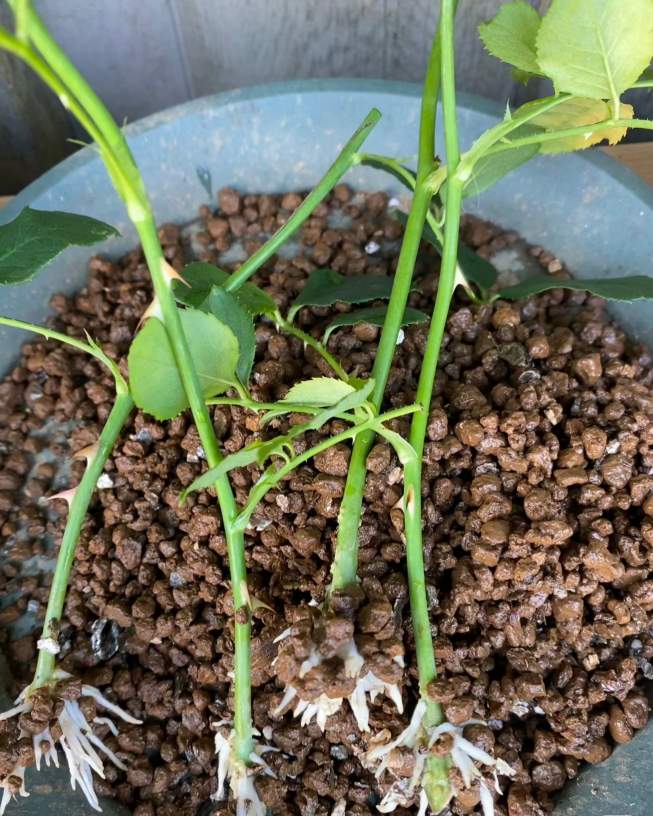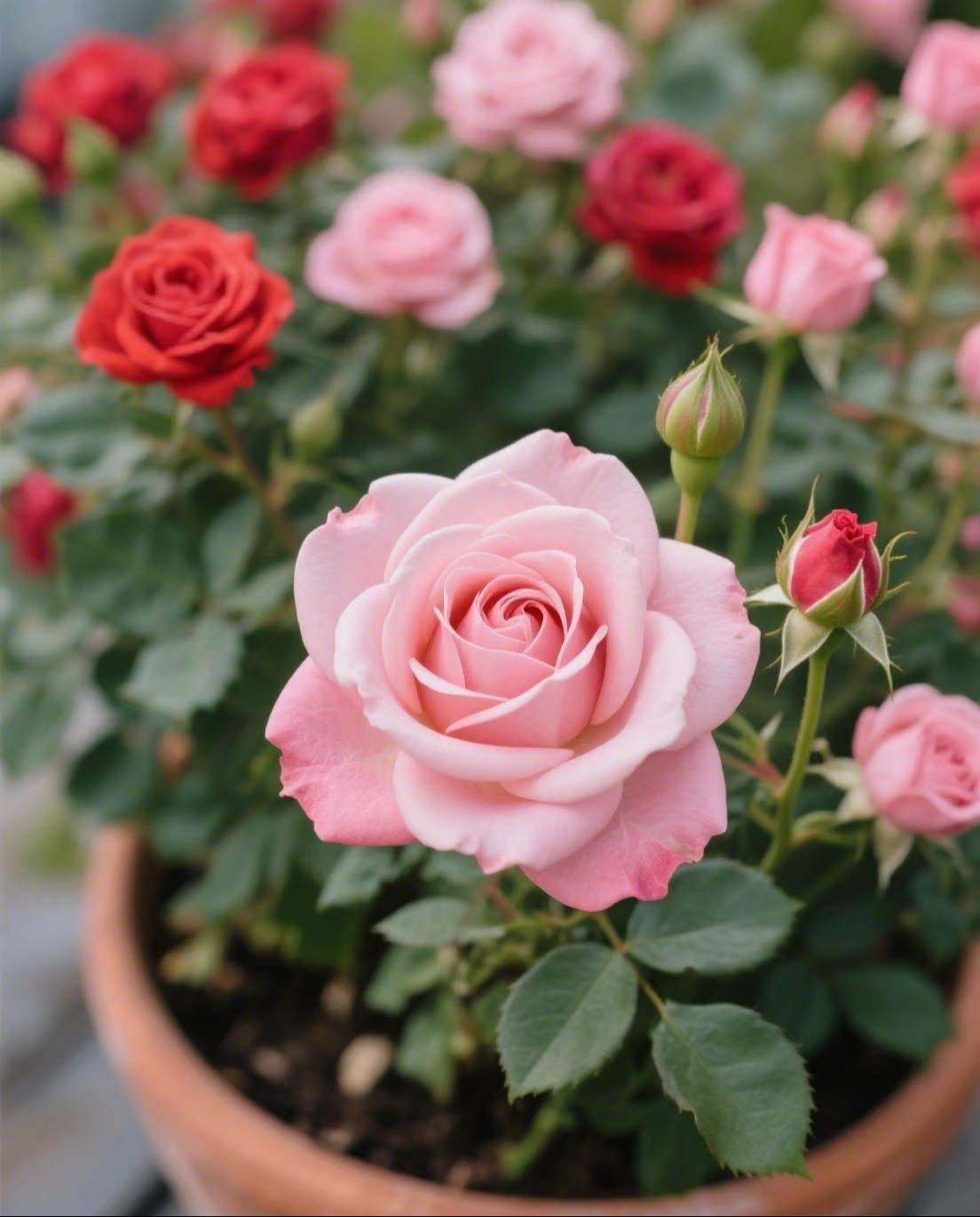How to Repot Roses: Zero-Fail Secrets for Transplanting & Propagating
Want your own rose garden? Today, I’ll walk you through a super simple method for repotting roses AND propagating new plants from cuttings—so you can multiply your favorites for free and enjoy endless blooms! This method is tried and true, with a super high success rate!

🌿 Let’s start with repotting roses! Give your old roses a fresh start!
Timing matters when moving roses. The best seasons are spring and fall (cool weather). Avoid hot summer days or frozen winter soil! Follow these tips, and your roses will keep thriving after moving.

📍 Location is key!
Sunlight! Sunlight! Sunlight! ☀️ At least 6 hours of direct sun daily! Good airflow, and keep them away from other plants—roses prefer their space!
Well-draining soil is a must! Dig a hole and pour water into it. If it takes more than an hour to drain, mix in compost or leaf mold to improve the soil.

🕳 Digging & Removing the Rose
- Prep the new hole: At least 15 inches (38 cm) deep and wider than the root ball. Mound a small cone of soil at the center.
- Remove the rose: Carefully dig around the outer root zone, preserving as much of the root ball as possible. Avoid yanking—damaged roots can hinder recovery!
💧 Repotting & Watering Is Everything!
- Place the root ball on top of the soil cone so it sits steadily.
- Backfill halfway—then STOP! ⏸️ Here’s the key: Water thoroughly! Let it soak in for 5+ minutes.
- Once drained, fill the rest of the soil and water deeply again! 💦
- Top with mulch (like wood chips or bark) to retain moisture and suppress weeds.
- Hold off on fertilizing until the rose has recovered, then use a rose-specific feed.
✂️ Now, Let’s Talk Propagation: Turn One Rose into Dozens!
The best time for cuttings is late spring/early summer (May–June) or early fall (September–October), when temperatures are ideal for rooting.

🌱 Smart Cutting Selection
- Choose healthy, flowered stems—semi-hardwood (not too soft or too woody).
- Cut at a 45° angle! Each cutting should be 5–8 inches (13–20 cm) long (not including the flower head). ✂️ Sterilize your tools and make clean cuts!
- Remove flowers and lower leaves, keeping only 2–3 sets of leaves at the top for photosynthesis.
💪 Rooting Boost
- To maximize success, use a rooting hormone (with IBA/NAA)! Dip the cut end into it to stimulate root growth.

🏡 Potting Your Cuttings: Create a Mini Greenhouse!
- Use well-draining medium: vermiculite, perlite, or light potting mix. Moisten it without waterlogging.
- Insert cuttings 1–2 inches (2–5 cm) deep and gently firm the soil around them.
- 🌟 Crucial step: Cover them! Create a mini greenhouse with a clear plastic cup, cut bottle, or bag (prop it up with a stick to avoid sagging). Humidity is key!
🌤 Care & Patience
- Place in bright, indirect light (no direct sun!). Keep the environment moist and humid.
- Wait 3–4 weeks—no peeking! Gently tug on cuttings; if there’s resistance, roots have formed!
- Once rooted, gradually remove the cover to acclimatize them. Transplant when stronger.

🎉 In Summary:
- Repotting roses: Preserve the root ball + water deeply (twice!) + mulch + avoid fertilizing initially.
- Propagating: Choose the right stems + use rooting hormone + create humidity + be patient!
Whether you’re repotting roses or starting new plants from cuttings, these tips will help you grow a gorgeous, thriving rose garden effortlessly!

 Ultimate Rose Care Guide: How to Grow Healthy & Blooming Roses
Ultimate Rose Care Guide: How to Grow Healthy & Blooming Roses  Lavender Care: What to Do When Lavender Wilts After Transplanting
Lavender Care: What to Do When Lavender Wilts After Transplanting  The Ultimate Wisteria Care Guide: Grow a Purple Paradise
The Ultimate Wisteria Care Guide: Grow a Purple Paradise  How to Grow Roses Indoors: A Beginner’s Care Guide
How to Grow Roses Indoors: A Beginner’s Care Guide 